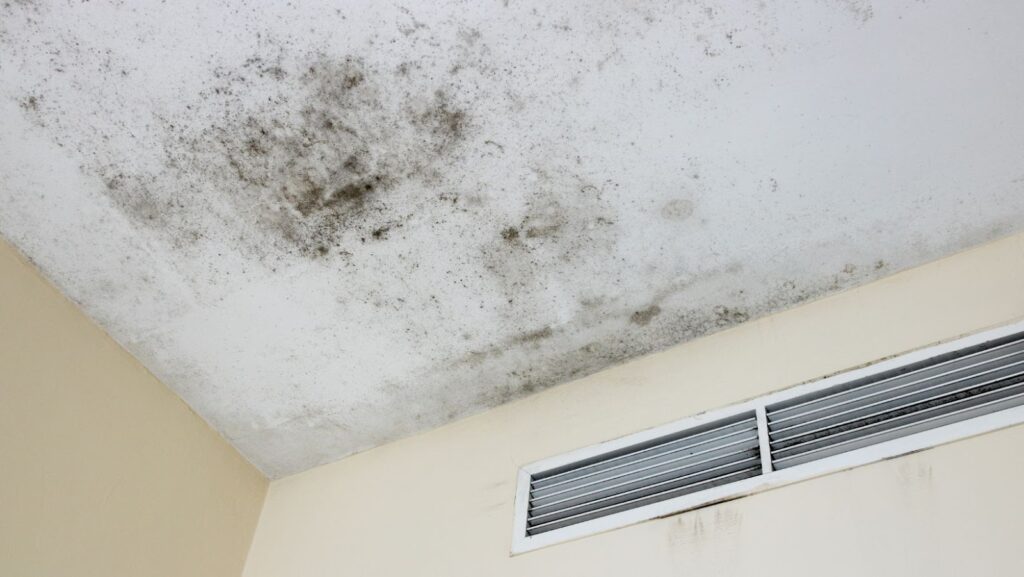
Mold on the ceiling is a common problem in many homes. While it may not be immediately obvious, mold can cause serious health problems if left unchecked.
In this article, we’ll take a look at what mold is, how it grows, and what you can do to prevent it from taking over your home.
What is mold and what are the health risks associated with it
Mold is a type of fungus that grows on wet or damp surfaces, especially in areas with poor ventilation. Mold can cause numerous health problems, including allergic reactions and respiratory issues. In some cases, it can even lead to serious long-term conditions like asthma and chronic obstructive pulmonary disorder (COPD).
Mold grows when microscopic mold spores are present in high concentrations. These spores can enter your home through windows, doors, or other openings, or they may be carried inside on clothing or pets. Once indoors, the spores land on damp surfaces and begin to grow.
What can you do to prevent mold growth in your home
The best way to prevent mold growth in your home is to address any moisture issues right away. Make sure that all of your plumbing fixtures are in good working order, and repair any leaks as soon as they occur. Also, be sure to keep the area around your baseboards and walls dry, and run a dehumidifier in the basement or other damp areas of your home.
In addition to these measures, you should also regularly inspect the surfaces in your home for signs of mold growth. If you do notice a spot of mold, use a mixture of water and bleach to kill it. Then, be sure to thoroughly dry the area, and take steps to prevent future mold growth by addressing the underlying moisture issue. While mold on the ceiling can be a serious problem, it is important to remember that preventative measures and regular inspections can help keep it under control.
How to identify if you have a mold problem
If you notice any of the following signs in your home, you may have a mold problem.
- Discolored or fuzzy-looking patches on walls, ceilings, or other surfaces
- Strong musty odor coming from certain areas of the house
- Dampness and condensation around windows and doors
To confirm that you have a mold problem, you can contact a professional mold inspector or testing company. They will be able to take samples of the air and surfaces in your home and test them for the presence of mold.
how to clean mold off ceiling
To clean mold off a ceiling, you will need to first remove any items from the room or area where the mold is growing. Next, mix together 1 part bleach and 3 parts water in a spray bottle, and apply this solution directly to the mold using a clean cloth or sponge. Be sure to wear protective gloves and eye goggles while cleaning the mold, and leave the area to dry completely before re-entering.
If you are unable to remove all of the mold from your ceiling using this method, it may be necessary to hire a professional mold remediation expert for assistance.
How to prevent mold from growing in your home
The best way to prevent mold from growing in your home is to keep the air and surfaces dry. Be sure to repair any leaks in your plumbing fixtures, and run a dehumidifier in the basement or other damp areas of your house.
In addition, you should regularly inspect the surfaces in your home for signs of mold growth. If you do notice mold, use a mixture of water and bleach to kill it. Then, take steps to prevent future mold growth by addressing the underlying moisture issue. While mold can be a serious problem, it is important to remember that preventative measures and regular inspections can help keep it under control.












